
Portraits of Floridablanca
and the Spanish nobility







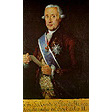 |
Goya had high hopes of the portrait he painted of the Prime Minister José Moñino, Count of Floridablanca in 1783 (Banco de España, Madrid). He hoped that it would open the doors to the Court one by one and that it would be a short cut to the greatly desired position of Court Painter (according to unpublished material, some years before Goya had written a letter to Charles III applying for the post and was supported by Bayeu). In the painting Goya offers a painting to the minister who looks haughtily out of the canvas. In the background there is an unidentified architect or engineer and above him, a portrait of Charles III. For whom this canvas was intended is unknown. One possibility is that it was related to the Canal Imperial de Aragón because in the picture can be seen a plan of the project put forward by the minister and carried out by Ramón Pignatelli, a fellow countryman of Goya and who also had his portrait painted by him. (1790, a copy of the lost original in the Museo de Zaragoza).
From 1785 onwards he painted a series of portraits of councillors of the Banco de San Carlos (antecedent of the Banco de España), new or long established members of the nobility: José de Toro, the Count of Altamira, the Marqués de Tolosa, the Count of Cabarrús, etc. One of the members painted was Ceán Bermúdez, functionary of the bank, art historian and collector of Goya's work. A friend of Goya's since his first days at Court, he had his portrait painted by Goya years later (private collection, Madrid). In a letter to his friend Martín Zapater some months after being given the post of Court Painter (1786) , Goya spoke of his triumph saying, "I had already set up an enviable mode of living for myself, I no longer played the servant to anybody, and anyone who wanted something of mine had to come looking for it. Unless he was of an elevated class or came with the recommendation of a friend then I worked for no man.". Some of his clients were members of the high nobility such as the Dukes of Osuna and the Duchess of Alba. For the former he painted several individual and group portraits such as the one in the Prado Museum (1788). They commissioned many other works. With the Duchess of Alba he developed a relationship that went beyond the artistic. Then a widow, she dedicated to him one of his most beautiful portraits, painted during a brief stay at the estate of Sanlúcar de Barrameda (1797, The Hispanic Society of America, New York). The portrait always belonged to Goya. Notable for its unusual style is the portrait of the Marquis of Santa Cruz (1805, Prado Museum), a magnificient example of romantic neo-Classicism. See also the portraits of:
BibliographyGLENDINING, Nigel. Goya : La década de los Caprichos : Retratos 1792-1804. Madrid, 1992. (Catalogue of the exhibition held in the Academia de San Fernando, Madrid). TOMLINSON, Janis A. Goya en el crepúsculo del Siglo de las Luces. Madrid, 1993. (Or. ed. in Eng.: Goya in the Twilight of Enlightenment. New Haven & London, 1992). Ricardo Centellas |
|
| José Moñino, Count of Floridablanca | ||
 |
||
| Ramón Pignatelli | ||
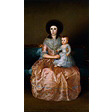 |
||
| The Countess of Altamira with her doughter | ||
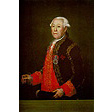 |
||
| The Marqués of Tolosa | ||
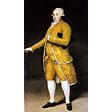 |
||
| The Count of Cabarrús | ||
 |
||
| The family of the Duke of Osuna | ||
 |
||
| The duke of Alba | ||
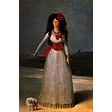 |
||
| The Duchess of Alba | ||
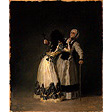 |
||
| The Duchess of Alba and her duenna |
 |
InfoGoya 96 is an initiative of the University of Zaragoza, sponsored by the Institution Fernando el Católico of the Deputation of Zaragoza on an Apple Internet Server donated by Apple Computer. |    |